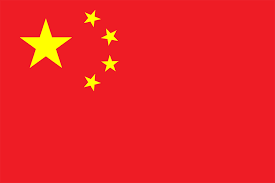Xiang Jingyu, born on this day in 1895, was one of the earliest female members of the Communist Party of China (CPC) and a pioneer of the women’s movement of China. She was executed by Guomindang police on May 1st, 1928.
Xiang Jingyu was politically radicalized when she attended the Montargis Women’s University in France. While studying there, Jingyu read many of Marx’s works and became a communist.
In 1923, Xiang became editor of a weekly supplement to The Republican Daily, a Guomindang newspaper. The same year Xiang Jingyu was also elected as a Central Committee member and became the first secretary of the “Women’s Movement Committee”.
In 1924, Xiang led a strike involving about ten thousand female workers from silk factories. Then, she founded the “Committee of Women’s Liberation” and trained many female cadres, who then became a force against feudalism and imperialism.
Xiang Jingyu was arrested in the French Concession Sandeli in Wuhan on March 20th, 1928. French officials turned her over to the Guomindang in April. On May 1st, 1928 she was executed.
Megathreads and spaces to hang out:
- ❤️ Come listen to music and Watch movies with your fellow Hexbears nerd, in Cy.tube
- 💖 Come talk in the New Weekly Queer thread
- 💛 Read and talk about a current topics in the News Megathread
- ⭐️ August Movie Nominations ⭐️
reminders:
- 💚 You nerds can join specific comms to see posts about all sorts of topics
- 💙 Hexbear’s algorithm prioritizes comments over upbears
- 💜 Sorting by new you nerd
- 🌈 If you ever want to make your own megathread, you can reserve a spot here nerd
- 🐶 Join the unofficial Hexbear-adjacent Mastodon instance toots.matapacos.dog
Links To Resources (Aid and Theory):
Aid:
Theory:
now all fediverse discussion will be considered a current struggle session discussion and all comment about it are subject to be removed and even banning from the comm.
have all of you a good day/night 


Saw some more Baldur’s Gate 3 and I’m usually not someone who cares about realism but it kinda bothers me how shiny and squeaky clean everyone’s clothes are the whole time, it makes it look like people playing dress up at a rennaissance fair. That green girl wakes up in some bio pod in the prologue, they fight their way through the innards of some flying monster and the whole time her armor literally sparkles, it’s so neatly clean.
Am I the only one who noticed this?
Edit: In this other scene she has blood and bruises on her face but her armor is still all sparkly and shiny. Not a single stain, you could probably see your reflection in it. I mean come on.
Prestidigitation is a cantrip, a very simple, easy to learn and use magic spell, that can clean clothes. Enterprising wizards run laundries with it. I shit you not. Doesn’t excuse not having grime and gore shaders for people’s armor, but in D&D getting your laundry washed can be vastly faster and less labor intensive than it ever has been in the real world. You don’t need a bunch of professional laundresses working all day with caustic lye in smotheringly hot, humid conditions. You can walk in to a level 1 wizard’s laundry, they snap their fingers at your basket of dirty linens a few times, and they’re all spotlessly, shining clean again.
Also, IRL, most people’s clothes, especially their nice going around clothes if they could afford two sets, were clean, brightly colored, and well tailored. You can bleach fabric bright white in cow pee. Soap has existed since forever. Europeans washed their hands and faces daily and got baths or swam in rivers as often as they could manage. Combing out and maintaining hair was an important hygiene practice, to such an extent that combs are a very common archeological fine and were often given as gifts. There are a large variety of easily aquired bright natural dies in Europe that make robust greens, blues, reds, and yellows. They’re not color fast like modern dyes but that just means you re-dye them every year or two. Clothing was mostly tailored and well fitted because weaving fabric was extremely labor intensive and fitted clothing uses less material than loose and baggy clothing. Skilled weavers could make finer fabric than modern machine looms, and a lot of people were pretty good at weaving because it kept you busy during the winter when there wasn’t much else to do.
Magic self cleaning armor is the first thing I’d invent
Rule of cool; gotta kinda ignore that stuff.